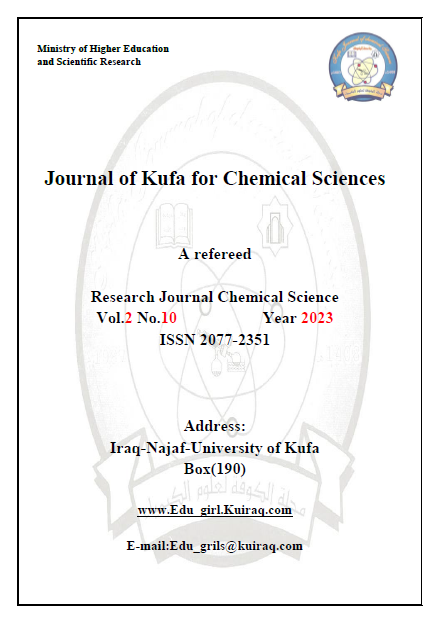Adsorption Study of Ni (II) and Pb (II) by Silver oxide Nanoparticles
DOI:
https://doi.org/10.36329/jkcm/2023/v2.i10.11021Keywords:
Heavy metals, Adsorption, Nanomaterials, Silver oxide.Abstract
In the present work, silver oxide nanoparticles (Ag2O-NPs) were used as an adsorption surface for removing nickel and lead ions from aqueous solutions, the surface properties were studied using various techniques like Fourier-transform infrared spectroscopy (FTIR) spectra shown the functional groups present in the synthesis silver oxides nanoparticles, X-ray diffraction (XRD) confirmed the crystalline nature of Ag2O-NPs with a crystallite size 38.69 nm, field emission scanning-electron-microscopy(FE-SEM) images showed that the Ag2O-NPs has spherical shape, and the presence of elemental silver signals of the silver oxide nanoparticles was confirmed by energy dispersive x-ray (EDX) analysis spectrum.
Adsorption experiments were carried out in order to determine the effect of contact time, adsorbent dose, and temperature on adsorption capacity, as well as to track the removal of Ni (II) and Pb(II) by Ag2O nanoparticles. Experiments showed that 50 min was a good choice as the ideal contact time to remove Ni (II) and Pb(II) ions, the optimal quantity of adsorption is approximately 200 (mg/l), and the optimal temperature that can be used to remove Ni(II) and Pb(II) ions is 298K. The results showed that both Ag(I) and Ni(II) could be effectively removed from aqueous solutions.
Downloads
Downloads
Published
How to Cite
Issue
Section
License
Copyright (c) 2023 Journal of Kufa for Chemical Sciences

This work is licensed under a Creative Commons Attribution 4.0 International License.
Open-access Statement
The journal « Journal Of Kufa For Chemical Sciences» provides immediate open access to its content on the principle that making research freely available to the public supports a greater global exchange of knowledge. Full-text access to scientific articles of the journal is presented on the official website in the Archives section.
This is in accordance with the BOAI definition of open access. The licensing policy is compatible with the overwhelming majority of open access and archiving policies.
The journal «Journal Of Kufa For Chemical Sciences» is an open access journal, which means all its content is freely available without charge to the user or his/her institution. Users are allowed to read, download, copy, distribute, print, search, or link to the full texts of the articles, or use them for any other lawful purpose, without asking prior permission from the publisher or the author as long as they cite the source.The journal is licensed by Creative Commons Attribution International( CC Attribution 4.0) .


